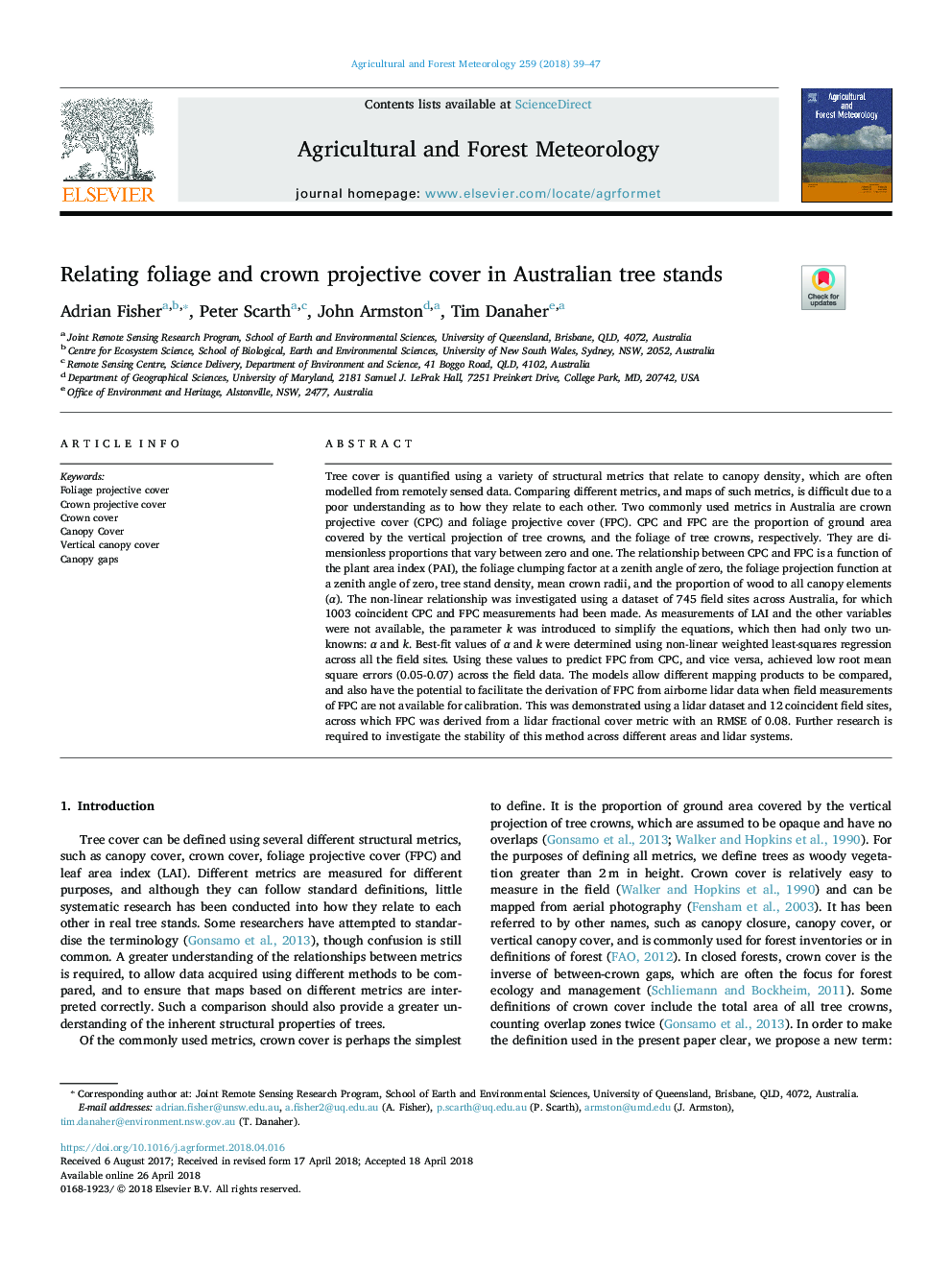| Article ID | Journal | Published Year | Pages | File Type |
|---|---|---|---|---|
| 6536629 | Agricultural and Forest Meteorology | 2018 | 9 Pages |
Abstract
Tree cover is quantified using a variety of structural metrics that relate to canopy density, which are often modelled from remotely sensed data. Comparing different metrics, and maps of such metrics, is difficult due to a poor understanding as to how they relate to each other. Two commonly used metrics in Australia are crown projective cover (CPC) and foliage projective cover (FPC). CPC and FPC are the proportion of ground area covered by the vertical projection of tree crowns, and the foliage of tree crowns, respectively. They are dimensionless proportions that vary between zero and one. The relationship between CPC and FPC is a function of the plant area index (PAI), the foliage clumping factor at a zenith angle of zero, the foliage projection function at a zenith angle of zero, tree stand density, mean crown radii, and the proportion of wood to all canopy elements (α). The non-linear relationship was investigated using a dataset of 745 field sites across Australia, for which 1003 coincident CPC and FPC measurements had been made. As measurements of LAI and the other variables were not available, the parameter k was introduced to simplify the equations, which then had only two unknowns: α and k. Best-fit values of α and k were determined using non-linear weighted least-squares regression across all the field sites. Using these values to predict FPC from CPC, and vice versa, achieved low root mean square errors (0.05-0.07) across the field data. The models allow different mapping products to be compared, and also have the potential to facilitate the derivation of FPC from airborne lidar data when field measurements of FPC are not available for calibration. This was demonstrated using a lidar dataset and 12 coincident field sites, across which FPC was derived from a lidar fractional cover metric with an RMSE of 0.08. Further research is required to investigate the stability of this method across different areas and lidar systems.
Keywords
Related Topics
Physical Sciences and Engineering
Earth and Planetary Sciences
Atmospheric Science
Authors
Adrian Fisher, Peter Scarth, John Armston, Tim Danaher,
